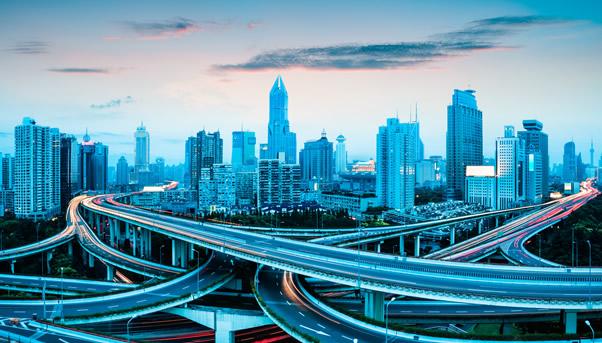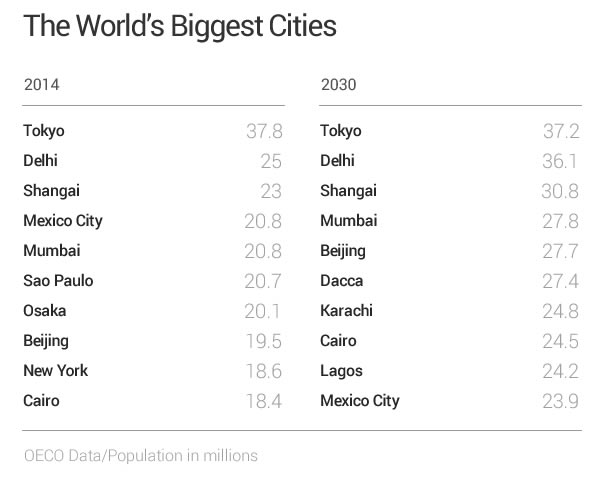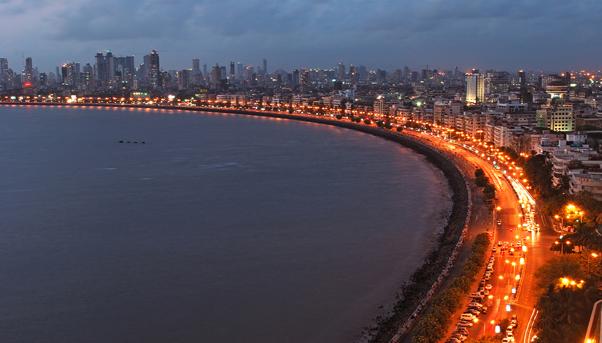
The Population Division of the Department of Economic and Social Affairs of the United Nations regularly publishes world demographic projections, of which the medium variant is too often the only variant cited, even if the projections are based on hypothesis that should be validated with extreme caution. It is possible to frequently hear statements affirming that in 2050 the planet will accommodate nine billion inhabitants, although there are many uncertainties relating to future developments in terms of fertility, life expectation and migration.
Megacities and the growth of urbanization
Nevertheless, it is evident that a certain trend is difficult to oppose: global urbanization - which sparked off in developed countries between 1750 and 1950 is now especially advancing in underdeveloped ones. Statistical data states that the urban population has passed from 740 million to 3.9 billion people from 1950 to 2014, and that in 2008 the number of people living in cities was greater than the rural population; 54% of humanity now lives in cities. According to the UN's medium projection, this figure could reach 66% by 2050.
What is a Megacity?
Even more impressive is the increase of the so-called "megacities" (as they are defined by the United Nations), cities exceeding ten million inhabitants. In 1970 these cities were only three; in 1990 they grew to ten, then twenty-eight in 2014. By 2030, they could become forty-one.
During the 20th century, the number of citizens grew, passing from 220 million in 1900 to 2.84 billion in 2000. Still according to the United Nations, such an increase could actually occur in just four decades. Approximately 93% of this increase will occur in developing countries, and more than 80% of in Africa, Asia, Latin America and the Caribbean.

What are the criteria for defining a megacity?
Although the answer to this question would seem to be, maybe wrongly, absolutely evident, it is important to underline that a clear and universal definition of what we would normally call "city" or "urban area" does not exist. The criteria used to define a city are very diverse: population density, structure of the area, existence of a local administration or even of a common governing system. In Iceland, an area is defined "urban" if it includes more than two-hundred inhabitants; in France a city must exceed two-thousand inhabitants and has to be characterised by a built-up area continuity. The definition used by the United Nations is the result of the combination of different criteria.
In 2007 nineteen urban areas were considered to be "megacities" (cities with more than ten million inhabitants).
With great probability their number could have increased since then and will still increase, even if in some large cities (Buenos Aires, Calcutta, Mexico City, São Paulo and Seoul) the emigration flow has exceeded the immigration one that, historically, has been the main motor of urbanization. Even if the number of megacities with more than ten million residents, and even those with twenty million people, could still increase, it is still highly probable that half of future citizens will live in urban areas with a population of less than one million people.
It is important to point out that the configuration of urban areas is not identical everywhere. Some cities have a really concentrated population and have grown in height. Other cities have experienced an increase in their population, but in a disorganised manner and in waves. This brought an intensification of the differences between a central middle-class nucleus and the city's suburbs, where the so-called "ghettos" expand. Therefore, in many northern cities of the world and in many southern ones, residents that are very well-off and that live in the city's centre coexist with people suffering from extreme poverty and who live in the periphery.
Challenges connected to urban poverty are enormous. We already observed that in the 2000-2030 period the urban population of developing countries could double. In order to guarantee that these people do not live in shanty homes, during these thirty years, a new city with one million people should be built every week. Statistical data regarding poverty are incomplete, whether they concern homeless people in rich countries or people living in shanties in poor countries. In 2008, the year in which the number of people living in cities exceeded those living in rural areas, a third of the people registered as citizens lived in shantytowns, 90% in developing countries, bidonvilles having often very different characteristics, like Brasil's favelas, Kenya's kijiji, Venezuela's barrios, South Africa's townships and Calcutta's bastis. It is therefore logical to ask oneself why cities attract an ever-growing number of people.
The attractions and downsides of urban life
Sociology's founders have always considered a city to be the cradle of modern life. They highlighted how it is not only characterised by a concentration of people, infrastructures, administration offices, but how it is a product of human nature, an ecological environment, an attitude, a mentality, a network of rational and interpersonal relationships that bond individuals. Other authors have pointed out instead how cities have represented the heart of industrialization, the places where work opportunities, welfare, the possibility to acquire an education and culture, communication media and the opportunities to improve one's life condition were more concentrated.

Just as the literature on educational, research and innovation centres, on the main poli di competitività and for the creation of wealth demonstrates, this second interpretation is still being advanced today, in the presence of a global economy that needs to be permanently "connected" and therefore placed at the heart of the networks formed by cities.
In 2007 Veolia Environment established an Observatory of Urban Lifestyles, which carried out a study concerning the inhabitants of fourteen large cities. The results confirm, in many ways, what has been said by Sociology's founders. The global community of citizens is composed of individuals whose daily lives are organized and are sorted out in a universe characterised by architectural modernism, which regards infrastructures and cutting edge services.
The inhabitants of large cities, captured in many flows, live on a "smaller planet" where distances and time are reduced thanks to mobility and accelerated communication. Individuals that live in cities and different social environments are continually close to each other, even if they are connected to the rest of the world and create relationships that are based on affinity. The city can, in any case, arouse confused and sometimes contradictory emotions in its inhabitants. The feelings felt by them with regard to their cities can be very different. The survey shows, for example, that comfort, attachment, politeness ... are the opposites of stress, saturation and insecurity. In all the cities surveyed more tan eight out of ten citizens perceive the city's space as a sum of every possibility that allows to, as a new yorker states, to "access everything, rapidly, how you want, when you want". At the same time, citizens state that "to really live well in a city you need to earn a lot" and, even if they consider the city to be a permanent space for potential encounters, they admit that it still conveys a feeling of anonymity and loneliness.
Urban spaces provide - according to the same survey - better access to education and to hygienic, sanitary, water supply and waste management services; they offer a series of infrastructures, means of transport and communication unimaginable in rural areas. Economists state that the externalities of cities are positive. But not all citizens have the same possibility of accessing these services; the city also means pollution, congestion, erosion of solidarity, marginalization, insecurity, crime; there are also the same number of isolating factors, reciprocal exasperation, tension and fear.
City modernization or abandonment?
Cities combine all the advantages and defects offered by "modern life". A main consumer of natural resources, and particularly greedy of energy, a city is a source of every type of pollution, like greenhouse effect gas emissions and waste; it appears to be not very environmentally sustainable and maybe even less attractive in terms of "life quality"; cities are being managed not as efficiently as they should be, while their vulnerability tends to increase based on their development. And, most importantly, not all cities have infrastructures and services of the same quality, on the contrary.
They also do not offer residents the same level of well-being. Urban engineering must be re-created and re-invented. And this is where concepts such as post-carbon cities, sustainable cities, intelligent cities or "smart cities" are born.
They can all greatly benefit from the development of information and communication technologies. The same technology, if it is not used to promote a more efficient management of urban areas and to develop new services, can encourage people to abandon large metropolitan urban areas, in order to favour a life style that combines a life lived in the countryside with the advantages that were once only exclusively reserved to cities.
While urbanisation cannot be contrasted, the future of cities and of megacities is still marked by many uncertainties. Administrative offices and companies in the construction sector, modernize cities and build systems and infrastructures, all parts that characterise a city and its appeal. They need to invent new ways of creating new opportunities: those offered by technological progress, in favour of a planned and optimal management of complex systems; those imposed by sustainable development; those born from a new aspiration for a better life in a world that tomorrow will be very different from yesterday's.


